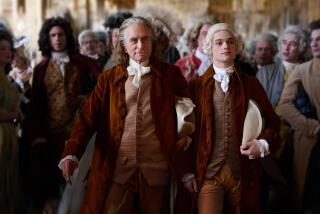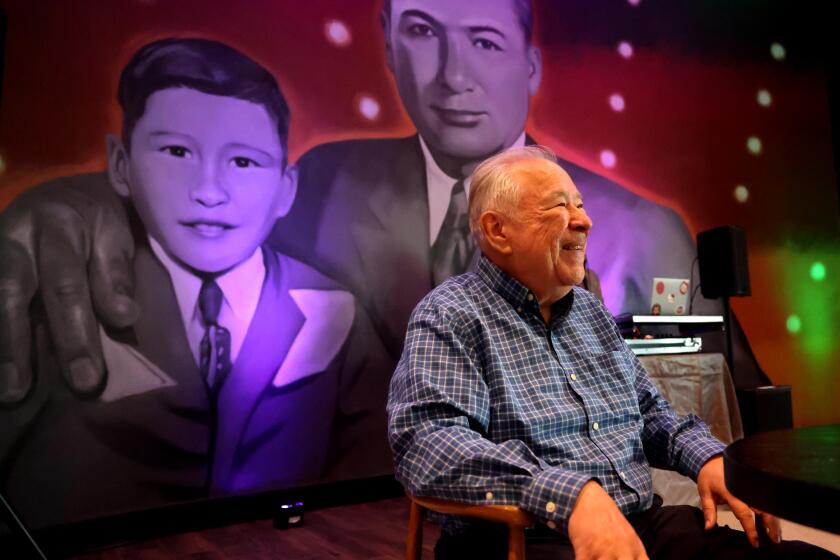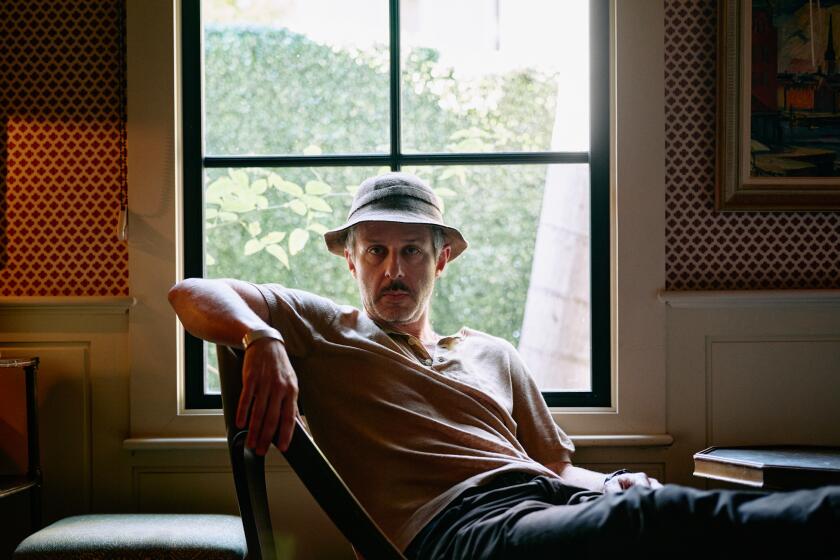A storyteller focused on the ties that bind
Robert Benton is so self-effacing that he once joked that “I’m like Dracula -- I don’t leave a trace in the mirror.” He’s much happier talking about his favorite filmmakers and actors than about himself, saying, “I’m shaped by who I collaborate with.” When Benton was making “The Late Show,” an early critical success, he recalls Robert Altman admonishing him, “Trust your actors. There’ll come a point in the picture where they’ll know more about the character than you do. Don’t be an idiot -- listen to them.’ ”
Forty years after co-writing “Bonnie and Clyde,” nearly 30 years after winning a fistful of Oscars for writing and directing “Kramer vs. Kramer,” Benton, who turns 75 this month, is now an éminence grise, standing a step behind Clint Eastwood as one of our last remaining masters of humanist drama. As Hollywood films have grown increasingly noisy and sterile, Benton’s have become more resonant and serene. Most of his best work explores common lives and the connections between family and community, be it the small-town clan of “Nobody’s Fool” or his affectionate portrait of life in his hometown of Waxahachie, Texas, that occupies the center of “Places in the Heart.”
His latest film, “Feast of Love,” which arrives Friday from MGM, examines many of those same bonds but puts its focus on romance, reminding us how much life is shaped by the mystery, passion and disappointments of love. Based on a novel by Charles Baxter, the film is populated with a gifted ensemble of actors, from accomplished veterans such as Morgan Freeman and Jane Alexander to such younger talent as Radha Mitchell, Greg Kinnear and newcomer Alexa Davalos.
There are many who might see a movie about love as a hard sell, a concern Benton is eager to dispel. “It isn’t sappy,” he says, a trace of Texas still lodged in his soft voice. “In a lot of ways, it’s about the downside of love, the idea that love always ends badly and yet it still seems worth doing. One reason I was attracted to the book is because you make movies to figure out things you don’t know. And when it comes to love, that’s something I still feel I don’t really understand.”
The film’s moral center is occupied by Freeman, who plays a local professor who has had love and loss in his life. “There are things you can act and things you can’t,” says Benton, who has the courtly air of a graying college professor, especially when you notice he has Ovid’s “Metamorphoses” under his arm. “You can’t act erotic -- you either have it or you don’t. The same goes for moral stature. It’s an internal thing, and Morgan has it.”
Benton laughs. “Maybe he got it from playing God, I don’t know!”
Freeman’s performances have grown less obtrusive as he has aged, something that has happened with Benton’s filmmaking as well. “The gift of getting older is the gift of making things simpler,” Benton says. “I used to agonize over things. I worry a lot less today. You realize that what shows up in the process, that might take you by surprise, is often better than what you’d planned for.”
He shrugs. “I’m less concerned about having a style -- or maybe I don’t have one and I’ve made my peace with it. You do what you do and try not to worry about it.”
Benton’s favorite Sam Peckinpah film, for example, is the elegiac “Ride the High Country,” not “The Wild Bunch.” “ ‘High Country’ is the best because Peckinpah wasn’t worried about being an artist,” he says. “When everyone got so concerned about having a style in the ‘70s, American movies went from being effortless to self-conscious, which isn’t always a good thing.”
Benton was raised on the movies. As a boy in Waxahachie, he was seriously dyslexic, preferring drawing to reading. “Actually, I couldn’t read,” he says. “But out of a kind of desperation I would draw and draw. I was close to being an autistic child, but drawing allowed me to extend my attention span and rejoin the world.”
He was especially close with his father, who instead of lecturing him about doing his homework would take Benton to the movies. “I learned narrative from the movies,” he recalls. “I became a storyteller just watching the stories on screen.”
After college, he headed for New York, where he ended up as an art director at Esquire magazine when it was an incubator for a new kind of American writing, publishing the work of Norman Mailer, Gay Talese and Tom Wolfe. Benton and his Esquire cohort David Newman helped create the magazine’s Dubious Achievement Awards and haunted the local art-house theaters with pals such as Peter Bogdanovich, then a writer at the magazine.
Hearing Benton describe his time at Esquire, it’s easy to see why he believes his years there inspired much of the brash unconventionality of “Bonnie and Clyde.”
“It was a free-for-all, so it was great training for using things from our lives in writing a movie,” he recalls. “The magazine was always desperate to attract a bigger audience, so we were like kids trying to get attention -- the rowdier and noisier we could be the better. Each week you had to come in with three or four story ideas and there’d be a brutal fight over what got accepted. It taught you to be a lot less constipated about having a bad idea or being made fun of. You’d just cut loose.”
‘Jules’ and ‘Bonnie’
Much under the spell of the French New Wave, Benton and Newman originally wrote “Bonnie and Clyde” hoping to have it directed by François Truffaut, who’d made “Jules and Jim,” another Benton favorite. “ ‘Jules and Jim’ had a huge shaping influence on ‘Bonnie and Clyde,’ ” he recalls. “Unlike most American movies of the time, it didn’t make any moral judgments about its characters. That fit our story, because we wanted to make a movie about outlaws without treating them like psychopaths. They weren’t tormented. They were people like us.”
Four decades later, “Bonnie and Clyde” -- as eventually directed by Arthur Penn -- still provokes intense critical debate. The New York Times’ A.O. Scott recently wrote a lengthy essay brooding about the film’s role in the widespread acceptance of violence in movies today. Though a bit anxious about taking issue with someone who might review his new film, Benton was concerned that critics put off by the film’s stylized violence should take note of a key cautionary direction note Benton and Newman put in the script.
“We wrote: ‘In this movie, unlike as in other movies, when bullets hit people, they should hurt.’ We wanted the violence to be real. As for the film’s stylized violence, if you pin ‘Saw’ on the picture, surely you have to remember that before us there was ‘The Seven Samurai,’ so let’s go back to the real culprit. But I think Scott raises an interesting question. If a work has a legacy of ‘The Godfather’ and ‘Pulp Fiction’ as well as ‘Saw’ and ‘Texas Chainsaw Massacre,’ do the good things that come out of it justify the trash?”
For Benton, favorite old movies remain a constant inspiration. There’s a riveting lover’s quarrel in “Feast of Love” that owes much of its inspiration to a scene in Howard Hawks’ “Rio Bravo,” in which Angie Dickinson and John Wayne express their love by fighting with each other. Benton explains: “It’s a way of showing the complexity of love by letting people, in the midst of a huge fight, discover how much they love each other.”
As a veteran filmmaker, Benton has a deep appreciation for how much our vision of a film can change as we grow older. He is a huge admirer of “Rio Bravo” today, but as a young cinephile, he was immune to its charms. “The first time I saw it I walked out,” he says sheepishly. “I saw Ricky Nelson singing some song and I went, ‘Oh, come on!’ Of course, when I saw the film five years later, I thought it was great. I’d totally misunderstood what Hawks was doing.”
Hearing Benton praise “Rio Bravo,” you realize his fond assessment of the movie could apply to many of his films as well. “Every time you see it as you get older, you see it in a different way,” he said. “As you change, the movie changes with you.”
--
More to Read
Only good movies
Get the Indie Focus newsletter, Mark Olsen's weekly guide to the world of cinema.
You may occasionally receive promotional content from the Los Angeles Times.










